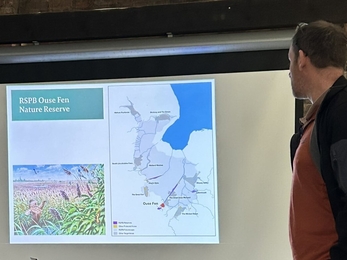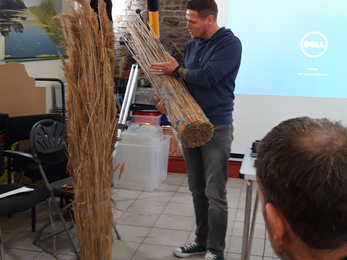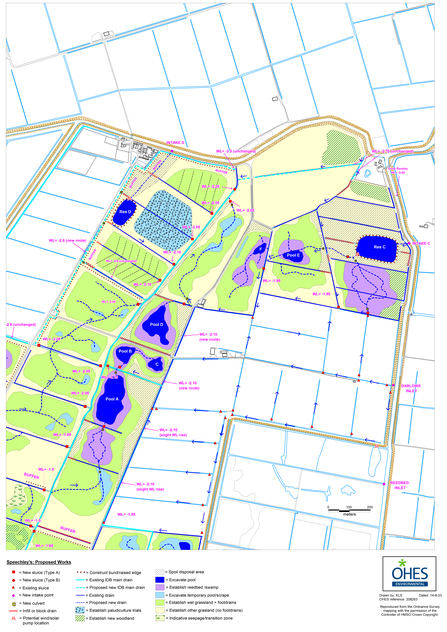In March, the East Midlands Master Thatchers' Association (EMMTA) were pleased to co-host a fascinating meeting with the Great Fen team at the Ramsey Heights nature reserve. The workshop was arranged to discuss the sustainable management of conservation wetlands and the barriers and opportunities this provides for commercial reed growing for the craft of thatching. It was an excellent turnout with 19 people attending, both in person and online, providing a broad spectrum of expertise. Members of the EMMTA were joined by representatives from the Broad's Authority, RSPB, Natural England, and other professionals with keen interest and experience in the topic.
The Great Fen Opportunity
Kate Carver (Great Fen Project Manager) and Lorna Parker (Great Fen Restoration Officer) led the opening presentation. This was an introduction to the creation of conservation wetlands at The Great Fen, the Peatland Progress project and its proposed reedbeds, and thoughts on commercial reed growing. (See Kate's further explanation at the end.) It gave a very interesting insight into all that has been achieved so far as well as what the future holds in terms of further developments including the potential new reed beds. It made us all aware that from the start, this has been a long-term vision not only for the ever vital habitats all flora and fauna depend upon, but also for our local communities and the human benefits too.
The Broads Perspective
Andrea Kelly (Environment Policy Advisor for the Broads Authority) presented next. This too was very informative, hearing what is happening in The Broads regards commercial reed production. The historical facts and figures were useful in making comparisons with the current situation. It is interesting to note that there are now only 35 reed cutters left in the country and The Broads are only producing approximately 117,000 - 130,000 bundles annually. Of the 5 million bundles required each year, this is a small amount which explains why a staggering 97% is now imported. Some of our older members remember the time when virtually no reed was imported…all this happening within almost one generation! Andrea's presentation also highlighted many of the challenges faced with reed production which were consequently discussed throughout the day.











